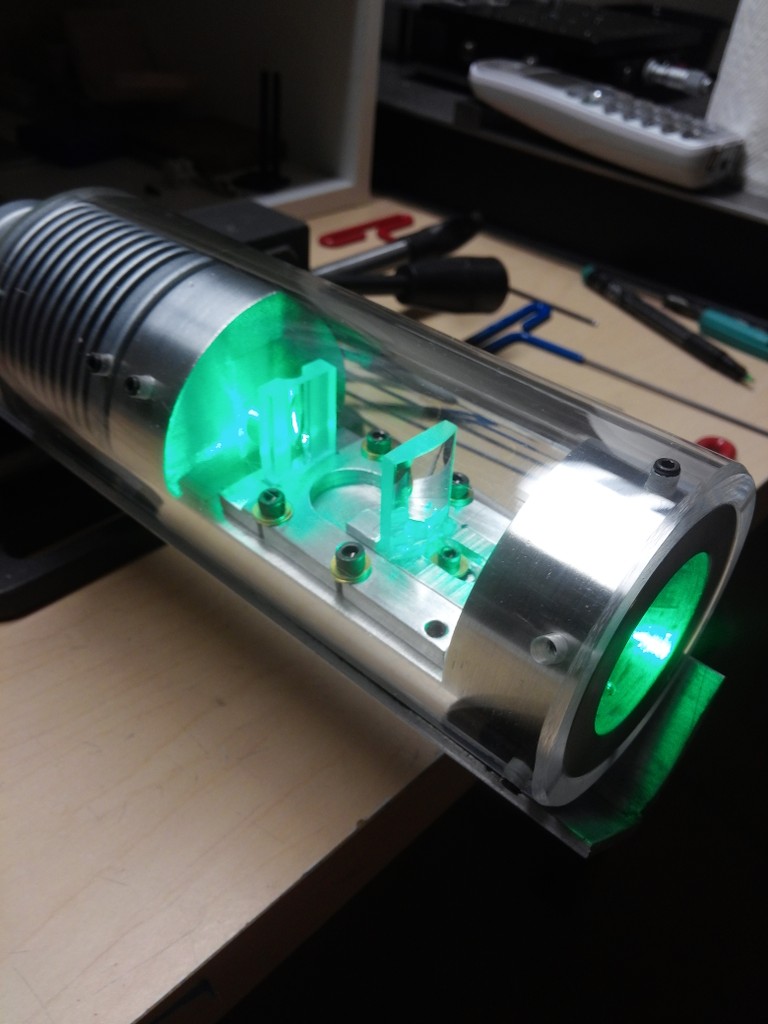- Joined
- Dec 30, 2016
- Messages
- 1,409
- Points
- 0
I know the standard way to tame the fast axis on a 44 which consists of cyl lens pair correction which is just like a beam expander for one axis as the beam exits the collimator it is still very narrow and passes through the first cyl lens which spreads out the beam to a wider diverging beam which hit the output cyl lens which converges the beam to a focusable focal point, But the beam exits the laser much wider than the slow axis so the beam on exit looks like a small stubby rectangle when both axis's are focused to infinity.
With out a beam expander no collimator can bring such a widely diverging axis to a focal point and there for when you focus the slow axis to a point the beam end up being a thin line which exits the laser on both axis's close to the same size but the fast axis fans out no mater how you focus the collimator.
Why couldn't a different approach work like for example the same diode and collimator that has a slowly diverging fast axis on exit BUT this time use a lightly converging cyl lens as the input converging the beam to a point but right before it can get to that point put a diverging lens there that will lightly diverge the converging beam to a parallel collimated axis that is the same small size as the slow axis as they both exit the laser with both of the axis's slowly converging to infinity at close to the same rate ???
Pardon the crude drawing that I knocked out very fast to try and get my idea across, But is there any reason why this approach couldn't work ??? Disregard where it says "beam expander" and substitute "cyl lens pair" in it's place.....

With out a beam expander no collimator can bring such a widely diverging axis to a focal point and there for when you focus the slow axis to a point the beam end up being a thin line which exits the laser on both axis's close to the same size but the fast axis fans out no mater how you focus the collimator.
Why couldn't a different approach work like for example the same diode and collimator that has a slowly diverging fast axis on exit BUT this time use a lightly converging cyl lens as the input converging the beam to a point but right before it can get to that point put a diverging lens there that will lightly diverge the converging beam to a parallel collimated axis that is the same small size as the slow axis as they both exit the laser with both of the axis's slowly converging to infinity at close to the same rate ???
Pardon the crude drawing that I knocked out very fast to try and get my idea across, But is there any reason why this approach couldn't work ??? Disregard where it says "beam expander" and substitute "cyl lens pair" in it's place.....

Last edited:






